-
How my background makes me different from other photographers.
___________________________From paralysis to play
I don’t know about you ,but I can be an over-thinker.
Several years ago I took improvisational comedy classes at Second City here in Chicago, the launchpad of such actors as John Belushi, Alan Alda, Steve Carrell, Amy Poehler and Tina Fey. My class was full of aspiring actors and comedians aiming to be brilliant and hilarious and stars. Me, I wanted people to like me at cocktail parties.
Our first instructor, MIchael, was absolutely brilliant. After each scene he gave us in-depth, insightful analyses of what worked and mostly what didn’t and why. We all learned sooo much.
And we all got paralyzed by overthinking.
When we got on stage to do the next scene, we’d get all up in our heads trying to live up to all that brilliant analysis. And, clunk. Just dull, flat, painful scenes that tried too hard to be funny. And no laughs. Ouch!
Several weeks into this analysis paralysis, right before I got up to do a scene, Michael said to me, “Have fun. You’re only as good as you are. Go, be that.”
It’s hard to explain, but I found that tremendously freeing. I could be more present and just go with my gut responses and let things emerge. I started to let go of expectations of how I SHOULD be or how the scene SHOULD go. Let go of any ideal of the perfect scene. It was okay to just BE, connect, accept whatever happened in the moment, and build on that.
The next term I had another instructor, Mick, with a different teaching philosophy. He’d have us get up to do a scene for just 30 seconds. (That taught us to jump in fast, not procrastinate initiating action!) He’d stop the scene, give us a quick note or two, then start us on a 20 second scene. Stop. Quick note or two. Start a 15 second scene. And so on.
It was a brilliant strategy to get us out of our analysis paralysis. We weren’t given enough time to overthink.
We left each class feeling like thoroughbred racehorses, ready to bolt out of the gates at breakneck speed, trusting ourselves to generate whatever the next moment needed. A further step in learning to play myself in new ways.
It’s deeply inflected the way I practice photography.
For instance, playful flow makes all the difference in a photo session. I do a lot of planning beforehand with my clients. The setting. The wardrobe. The qualities we want to capture.
But all that is simply setting the stage. Things ALWAYS go differently than I anticipated. The magic happens in the moment, in that space of the unexpected.
It’s my job to set the stage, then create an emotional space for play, fun, flow, celebration. And capture the magic of the moment. It’s an improvisation. (I’ve even been known to use improvisational games in a photo session!) The photos are all about capturing a moment, not a pose.
Ready to come out and play? Let’s see what badassity we uncover . . .
Schedule a possibility conversation today.
-
I agree with Carrie’s comment above. I do love how you relate your improv experience to what you do now with photography. It sounds like you do the thinking and set the stage, creating a safe space and a great environment, and all your client has to do is show up and play and be themselves? That sounds SO freeing! Do you still do improv? I am in a local improv troupe and love it – I would LOVE to go to Second City for classes!!! Luck you!
-
Thanks, Carrie and Blair! I slept on it, and decided the focus of the piece was off. Here’s my rewrite.
-
Ever get self-conscious in front of the camera?
If you’re a coach, consultant, entrepreneur, or transformational leader you know you need compelling brand photos to presence yourself online. But step in front of the camera and . . . CLUNK. You feel awkward, stiff, self-conscious, adrift. And, yeah, the images often reflect your discomfort.
I get it. Being photographed is a weird, artificial situation for anyone. And self-consciousness is a natural response.
Several years ago I took improvisational comedy classes at Second City here in Chicago, the launchpad of such actors as John Belushi, Alan Alda, Steve Carrell, Amy Poehler and Tina Fey. My class was full of aspiring actors and comedians aiming to be brilliant and hilarious and stars. Me, I wanted people to like me at cocktail parties.
Our first instructor, MIchael, was absolutely brilliant. After each scene he gave us in-depth, insightful analyses of what worked and mostly what didn’t and why. We all learned sooo much.
And we all got paralyzed by overthinking and self-consciousness.
When we got on stage to do the next scene, we’d get all up in our heads trying to live up to all that brilliant analysis. And, clunk. Just dull, flat, painful scenes that tried too hard to be funny. And no laughs. Ouch!
Several weeks into this analysis paralysis, right before I got up to do a scene, Michael said to me, “Have fun. You’re only as good as you are. Go, be that.”
It’s hard to explain, but I found that tremendously freeing. I began to stop focusing on me, and be present for my scene partners. I started to let go of my self-consciousness.
The next term I had another instructor, Mick, with a different teaching philosophy. He’d have us get up to do a scene for just 30 seconds. (That taught us to jump in fast, not procrastinate initiating action!) He’d stop the scene, give us a quick note or two, then start us on a 20 second scene. Stop. Quick note or two. Start a 15 second scene. And so on.
It was a brilliant strategy to get us out of our analysis paralysis and self-consciousness. We weren’t given enough time to overthink. Boom! Initiate and respond.
We left each class feeling like thoroughbred racehorses, ready to bolt out of the gates at breakneck speed, trusting ourselves to generate whatever the next moment needed. A further step in learning to play in new ways.
This experience has deeply inflected the way I practice photography.
Most photographers are trained in “posing the subject”. (I am too.) It’s all about capturing the pose (arranging body parts to make an attractive composition in the camera frame). How the “subject” (you!) is experiencing the moment is, unfortunately, secondary.
Improv, on the other hand, is all about staying in flow, focus on what’s going on outside you, being fully present, and letting moments emerge. Most of all, it’s about not getting attached and trying to freeze time.
Last year I photographed the joyous, expressive Darrick, a Unitarian minister, sometime actor, and improviser. I wanted to showcase Darrick’s joy communicating with others, so we made up an improv game on the spot. I called it “Talking with Your Hands”, and it was just that. I asked him to describe an exquisite Fabrage egg and talk with his hands. Success! Joyous expressiveness without a trace of self-consciousness.
We captured moments, rather than poses.
My job is to set the stage, then create an emotional space for play, fun, flow, celebration. And capture the magic of the moment. A great photo session is a fun improv game, not a police lineup!
Ready to come out and play? Let’s see what badassity we uncover . . .
Schedule a possibility conversation today.
-
About Me
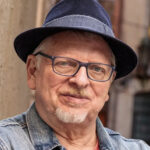
Dan Lewis
Photographer/ Personal Brand Consultant
Media
Photos
Videos
Audios
Files
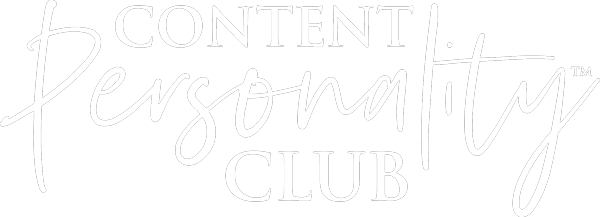





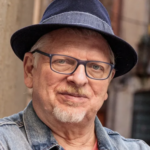

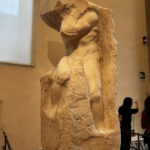

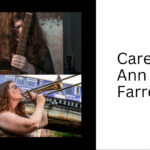
Hey Dan! I like this story, and I can see how it ties directly into the work you do now. For me, it feels like the story from the past takes up more of your email than how it relates to what you do now. Is there a way you can shorten the past story and lengthen how it ties into your current process?